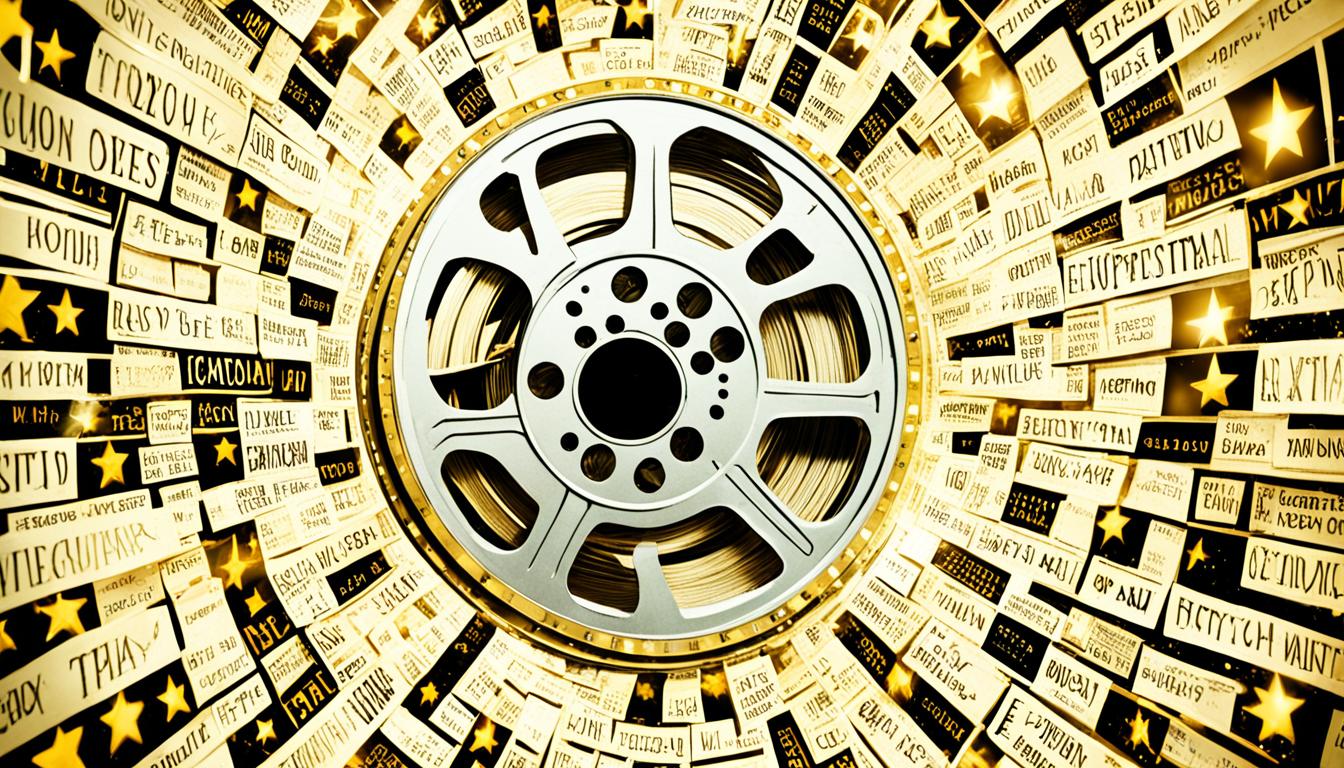
Picture this: You’re scrolling through the latest movie releases, eager to plan your next cinematic adventure. But with so many options and opinions out there, how do you know which films are worth your time and hard-earned money? Enter the world of movie reviews and ratings – your trusty guide to navigating the vast landscape of cinema.
In a cozy corner of a bustling cafe, film enthusiast Emma sat sipping her latte, poring over a stack of movie reviews. “I can’t wait to see the new superhero flick everyone’s been raving about,” she mused, “but I want to make sure it’s really worth the hype.” Emma’s search for the perfect movie-going experience is a common one, and this article aims to equip you with the knowledge and tools to make informed decisions about your next cinematic escapade.
Key Takeaways
- Understand the importance of movie reviews and ratings in guiding your film choices.
- Explore the different movie rating systems and their impact on content suitability.
- Discover the role of review aggregators in providing a comprehensive overview of critical and audience reception.
- Gain insights into the evolving landscape of cinema analysis and entertainment journalism.
- Learn how to navigate online movie discourse and engage with fan communities.
Understanding Movie Rating Systems
The movie rating system, established by the Motion Picture Association (MPA) in 1968, serves as a vital guide for parents to determine the appropriateness of a film for their children. This comprehensive system categorizes movies into various ratings, each indicating the level of content and suitability for different age groups.
Parental Guidance and Age-Appropriate Content
The MPA rating system includes several categories, ranging from G (General Audiences) to R (Restricted). These ratings provide parents with the necessary information to make informed decisions about the content their children will be exposed to. For instance, a PG-13 rating suggests that the film may contain material that is not suitable for children under the age of 13, while an R rating indicates that the film is restricted to adults only.
Ratings Categories Explained
- G (General Audiences): Suitable for all ages.
- PG (Parental Guidance Suggested): Some material may not be appropriate for young children.
- PG-13 (Parents Strongly Cautioned): Some material may be inappropriate for children under 13.
- R (Restricted): Under 17 requires accompanying parent or adult guardian.
- NC-17 (Adults Only): No one 17 and under admitted.
In addition to these main categories, the MPA also uses content descriptors to provide more detailed information about the nature of the content, such as the presence of violence, sexual content, or language. This comprehensive rating system helps parents make informed decisions and ensures that children have access to age-appropriate movie content.
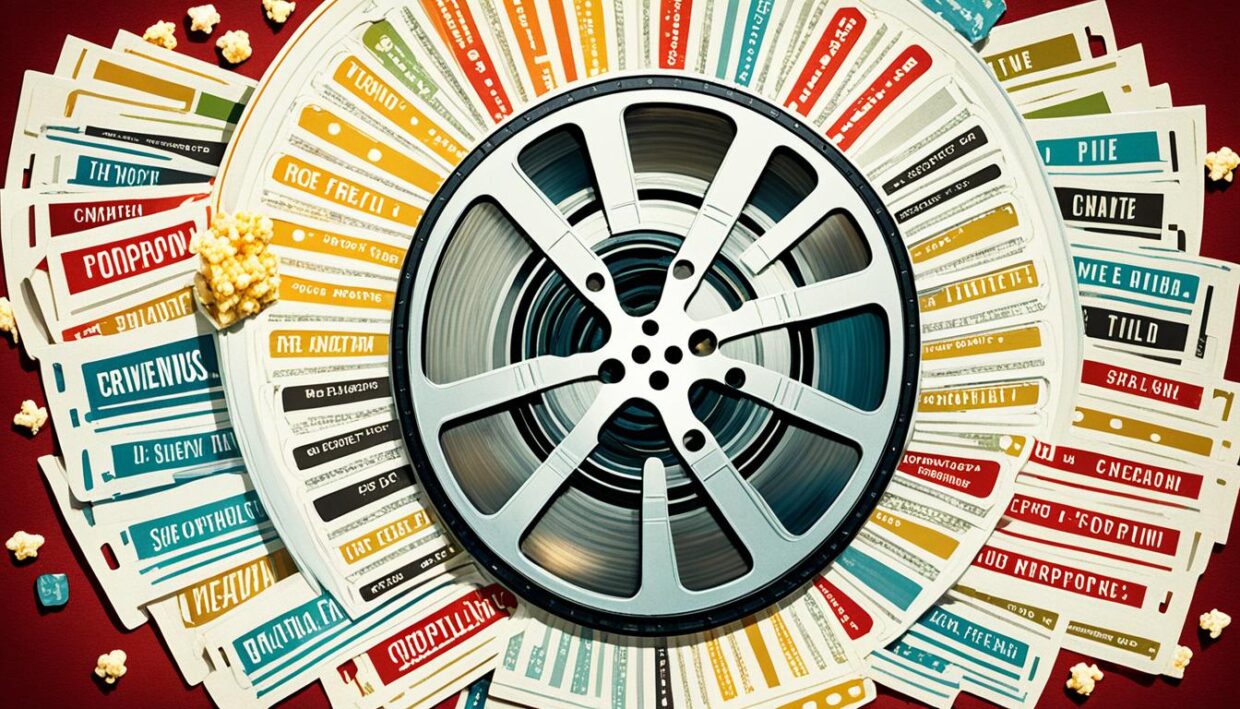
The Importance of Movie Reviews
Movie reviews play a pivotal role in shaping the cinematic landscape, serving as a bridge between filmmakers and audiences. Critics analyze the artistic merits of a film, providing insightful critiques that explore the technical, narrative, and performance aspects of the cinematic experience. Their evaluations can significantly influence audience perceptions and guide moviegoers in making informed choices.
Critiquing Cinematic Artistry
Film critics delve deep into the intricacies of a movie, examining how the director’s vision, the actors’ performances, the cinematography, and the overall storytelling contribute to the on-screen experience. Their analyses shed light on the artistic nuances that may elude the casual viewer, enhancing the audience’s appreciation of the film’s cinematic artistry.
Gauging Audience Reception
Movie reviews not only provide a critical assessment of a film but also serve as a barometer of audience reception. Critics offer insights into how the general public may respond to a particular movie, helping filmmakers understand the evolving tastes and preferences of their target audience. This feedback can inform future creative decisions and shape the direction of the industry.
Recent studies have found that film reviews significantly impact consumer thought processes and decision-making. Positive reviews, in particular, have a strong effect on individuals with a high need for cognitive closure, while negative reviews tend to have a more detrimental impact on box office performance over time.
| Statistic | Value |
|---|---|
| Film reviews are generally between 600 to 1200 words in length. | 600 – 1200 words |
| About one-third of Americans seek advice from critics when deciding on movie choices. | 33% |
| Negative reviews have a diminishing influence over time but are more detrimental to a film than positive reviews are beneficial. | – |
| Over 75,000 movies are covered in the Movie Review Query Engine database. | 75,000+ |
The importance of movie reviews lies in their ability to enhance the appreciation of cinematic artistry and provide valuable insights into audience reception. As the film industry continues to evolve, the role of critics in shaping the cinematic landscape remains crucial.

Exploring Movie Review Aggregators
In the digital age, movie review aggregators have become an invaluable resource for filmgoers seeking a comprehensive assessment of a movie’s critical reception. Platforms like Rotten Tomatoes, Metacritic, and IMDb compile reviews from a vast network of critics, providing a collective score and sentiment that can help inform viewing decisions.
Rotten Tomatoes, a prominent movie review aggregator, has been in operation for 25 years. The platform aggregates critic and audience reviews to provide a “Tomatometer” score, which quickly indicates whether a movie is well-received or not. Similarly, Metacritic offers a Metascore, a weighted average of critic scores, to help users evaluate the overall quality of movies, TV shows, and other media.
The impact of these review aggregators extends beyond just providing ratings. They have significantly influenced the film industry, with studios actively targeting specific reviewers and manipulating the system to ensure positive initial reviews and high scores. This, in turn, has raised concerns about the evolving role of critics and the diminishing influence of individual voices like Roger Ebert and Gene Siskel, who once had the power to sway public opinion.
| Platform | Focus | Unique Feature |
|---|---|---|
| Rotten Tomatoes | Movies | Tomatometer score |
| Metacritic | Movies, TV, Games, Music, Books | Metascore |
| IMDb | Movies, TV | User and critic reviews |
While these review aggregators provide a valuable service, they are not without their critics. Some argue that the simplicity of the Rotten Tomatoes system, which classifies reviews as either “fresh” or “rotten” to calculate an overall score, can be misleading. Movies can achieve a high score based on just “okay” reviews, as evidenced by the case of “Paddington 2” surpassing the classic “Raging Bull” in terms of Rotten Tomatoes ratings.
Additionally, concerns have been raised about the influence of studios, who can strategically select critics likely to give positive reviews and manipulate the initial scores on these platforms. This, coupled with the diminishing influence of individual critics, has led to a shift in the landscape of film criticism and audience perception.
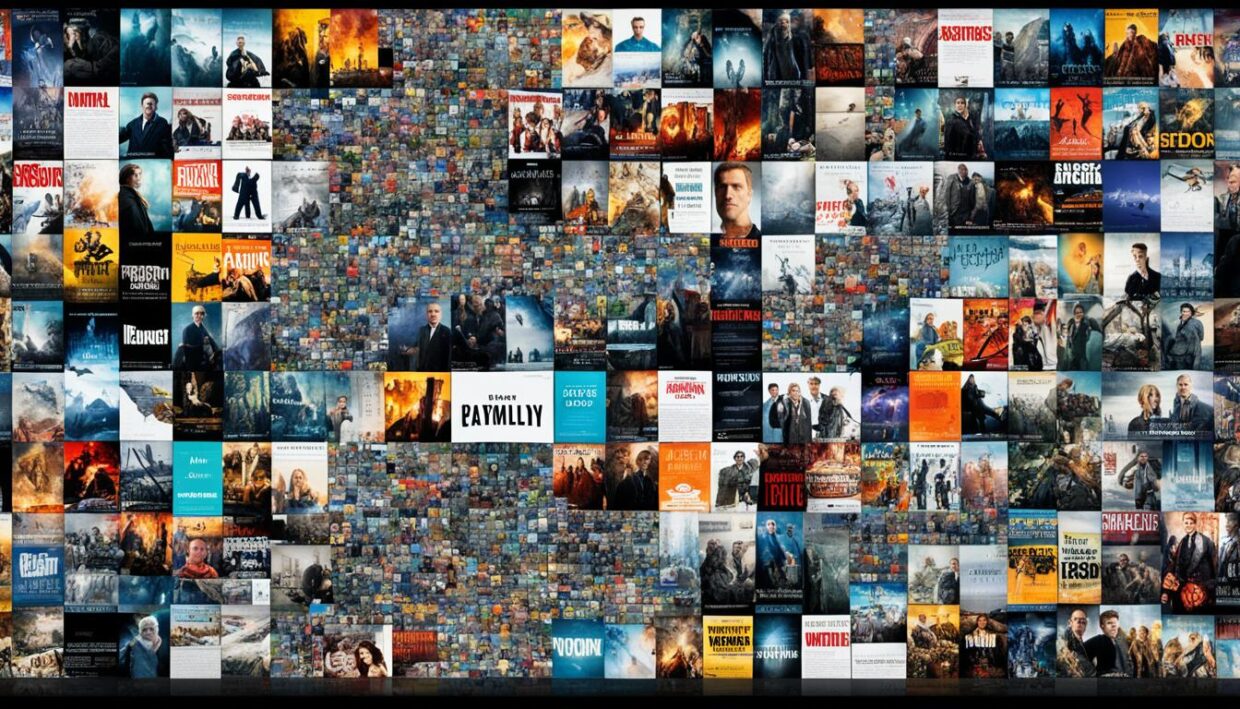
As the role of movie review aggregators continues to evolve, it is crucial for filmgoers to approach these platforms with a critical eye, recognizing their limitations and the potential biases that may exist. By understanding the complexities of review aggregation, audiences can make more informed decisions and engage with the world of cinema in a more nuanced and meaningful way.
movie reviews and ratings
As the entertainment industry continues to evolve, movie reviews and ratings have become an integral part of the cinematic landscape. From historical context to the latest trends in film criticism, this section delves into the multifaceted world of movie reviews and ratings, offering a comprehensive guide for movie enthusiasts and industry professionals alike.
The art of movie reviews has a rich history, with film critics and journalists playing a crucial role in shaping public perception and influencing audience choices. Over time, the landscape of movie reviews has seen a significant transformation, with the rise of online platforms and the increased accessibility of audience feedback.
In this section, we will explore the various factors that contribute to the evaluation of a film’s quality, including technical aspects, artistic merit, and audience reception. We will also investigate the impact of rating systems, such as the Motion Picture Association of America (MPAA) guidelines, and how they influence content consumption and parental decision-making.
| Movie Title | Box Office (USD) | Content Rating | Quality Rating |
|---|---|---|---|
| DESPICABLE ME 4 | $43.6 million | -1 (Individual reviews may provide more detailed content analysis) | N/A |
| LONGLEGS | $22.4 million | N/A | N/A |
| INSIDE OUT 2 | $20 million | N/A | N/A |
| A QUIET PLACE: DAY ONE | $11.4 million | N/A | N/A |
| FLY ME TO THE MOON | $9.4 million | N/A | N/A |
Furthermore, this section will delve into the significance of movie review aggregators, such as Rotten Tomatoes and Metacritic, and how they have revolutionized the way audiences and industry professionals assess the quality and reception of films.

By exploring the intricacies of movie reviews and ratings, this section aims to provide readers with a deeper understanding of the critical analysis of cinema, empowering them to make informed decisions and engage with the entertainment industry in a more meaningful way.
Evaluating Film Criticism
Film criticism is a multifaceted endeavor that requires a delicate balance between objectivity and subjectivity. Critics must navigate the complex task of analyzing a film’s technical and artistic merits while acknowledging the inherently personal nature of their assessments. This section explores the ongoing debate surrounding objectivity and subjectivity in film criticism, examining how critics strive to provide informed and insightful evaluations that resonate with their audiences.
Objectivity vs. Subjectivity
The realm of film criticism is often characterized by a tension between objectivity and subjectivity. On one hand, critics aim to provide impartial analyses that assess the technical and creative aspects of a film, such as its cinematography, acting, and narrative structure. This objective approach seeks to evaluate a film’s merits based on established critical standards and industry benchmarks.
However, the subjective nature of the viewing experience cannot be ignored. Each critic brings their own unique perspectives, personal preferences, and life experiences to the evaluation process. This subjective element allows for a more nuanced and insightful critical analysis, as critics can explore the emotional and thematic resonance of a film, and how it connects with their individual sensibilities.
| Objective Factors | Subjective Factors |
|---|---|
|
|
The challenge for critics lies in striking a balance between these two perspectives, using their expertise and critical faculties to provide well-rounded and insightful evaluations that resonate with their audience. By acknowledging and navigating this delicate interplay, film critics can offer valuable insights that enrich the overall understanding and appreciation of cinema.

Box Office Performance Analysis
The box office performance of a film is a crucial factor in evaluating its overall success. By analyzing a movie’s commercial reception, critics and industry professionals can gain valuable insights into audience engagement and preferences. This section examines the role of box office data in the world of film criticism, exploring how this information is used to gauge the impact and significance of a cinematic release.
One recent example of a highly anticipated box office debut is the upcoming Super Mario Bros. Movie, which is expected to surpass the $100 million mark in its domestic opening weekend. This data suggests that the film has generated significant audience interest and anticipation, potentially indicating a strong commercial performance.
Furthermore, the global movie industry has shown signs of recovery, with nearly 90% of movie theaters now open worldwide. This improved accessibility has likely contributed to the increased box office performance of various recent releases.
| Movie | Daily Gross (Fri Jul 12) | Daily Gross (Sat Jul 13) | Daily Gross (Mon Jul 15) | Daily Gross (Tue Jul 16) | Daily Gross (Wed Jul 17) |
|---|---|---|---|---|---|
| Despicable Me 4 | $13,695,730 | $17,568,280 | N/A | N/A | N/A |
| Inside Out 2 | +57.2% | +32.6% | N/A | N/A | N/A |
| Longlegs | N/A | N/A | -48.5% | +17.4% | N/A |
| A Quiet Place: Day One | +65.7% | N/A | -53.8% | N/A | N/A |
| MaXXXine | N/A | N/A | N/A | +33.5% | N/A |
| The Garfield Movie | N/A | -4.9% | N/A | +19.2% | N/A |
| Robot Dreams | +420% | N/A | N/A | N/A | -84.1% |
The table above highlights the varying box office performance of several recent movie releases, showcasing the fluctuations in daily gross and the diverse audience engagement patterns. These insights can help film critics and industry professionals better understand the commercial success and audience reception of these titles.

In conclusion, the analysis of box office data serves as a valuable tool in the evaluation of a film’s overall impact and significance. By closely examining the commercial performance of movies, critics and industry professionals can gain a deeper understanding of audience preferences and the factors that contribute to a production’s commercial success or failure.
The Evolution of Cinema Analysis
The art of cinema analysis has undergone a remarkable transformation over the years, evolving from traditional approaches to more contemporary methods of understanding and evaluating films. This dynamic shift has been driven by the changing landscape of the cinematic medium, as well as the evolving perspectives and methodologies employed by film critics and scholars.
Traditional Approaches to Film Criticism
In the early days of cinema, film criticism was largely dominated by a formalist approach, with critics focusing on the technical and aesthetic elements of a film. This traditional approach often emphasized the director’s artistic vision, the cinematography, and the overall craftsmanship of the filmmaking process. Critics analyzed the formal elements of a film, such as its composition, lighting, and editing, to assess its artistic merit and cultural significance.
The rise of auteur theory in the mid-20th century further solidified the importance of the director’s role in shaping a film’s artistic vision. Critics celebrated the work of directors who demonstrated a unique and consistent style, treating them as the primary creative force behind a film.
Embracing Modern Approaches to Cinema Analysis
As the film industry and the cultural landscape have evolved, so too have the approaches to cinema analysis. Modern film criticism has embraced a more diverse and interdisciplinary perspective, drawing insights from fields such as sociology, cultural studies, and gender studies. Critics now examine the societal, political, and ideological implications of films, considering how they reflect and shape cultural narratives.
Contemporary film analysis also places greater emphasis on the audience’s reception and engagement with a film. Critics analyze how audiences interpret and respond to a film, taking into account factors such as personal experiences, cultural backgrounds, and societal norms. This shift towards a more audience-centric approach has broadened the scope of cinema analysis, allowing for a deeper understanding of the medium’s impact and relevance.
The evolution of cinema analysis has been further accelerated by the rise of digital technologies and the proliferation of online platforms for film discourse. Social media, blogs, and specialized websites have democratized the art of film criticism, enabling a wider range of voices and perspectives to contribute to the ongoing dialogue around the cinematic medium.

As the field of cinema analysis continues to evolve, it is clear that the traditional and modern approaches are not mutually exclusive. Instead, they exist in a dynamic interplay, with critics and scholars drawing from both traditions to craft a more comprehensive understanding of the complex and multifaceted art of filmmaking.
Diving into Entertainment Journalism
Entertainment journalism plays a crucial role in shaping the public’s perception of the film industry. From news reporting and feature stories to in-depth analysis and interviews, entertainment journalists bring a unique perspective to the world of cinema. This section will explore the evolving landscape of entertainment journalism, examining how it has adapted to the digital age and the increasing influence of social media, and how it continues to impact the cultural discourse surrounding film.
In recent years, entertainment journalism has undergone a significant transformation, with the rise of digital media and the increasing importance of social platforms. Platforms like Rotten Tomatoes, Metacritic, and IMDb have become essential resources for film critics and audiences alike, providing a platform for a diverse range of voices and perspectives on the entertainment landscape. This has led to a more democratized and inclusive dialogue around the cultural impact of film.
Moreover, the rise of social media has given entertainment journalists a powerful tool to engage with their audiences, fostering a more interactive and dynamic relationship between critics and fans. From live-tweeting during movie premieres to hosting Q&A sessions with filmmakers, entertainment journalists are now able to provide a more immediate and immersive experience for their readers, ultimately shaping the cultural discourse around the medium.
As the media landscape continues to evolve, entertainment journalism has become increasingly important in navigating the complexities of the film industry. From highlighting the importance of diversity and representation in cinema to scrutinizing the impact of box office performance and industry trends, entertainment journalists play a vital role in shaping the cultural impact of film.
In the following sections, we will delve deeper into the role of entertainment journalism, exploring the various approaches, trends, and controversies that have emerged in this dynamic field of media.

Navigating Online Movie Discourse
The internet has revolutionized the way audiences engage with and discuss movies. Online platforms, forums, and social media have become hubs for passionate fans to share their perspectives, debate critical opinions, and connect with like-minded individuals. This section will explore the dynamics of online movie discourse, delving into how fans and casual moviegoers navigate the digital landscape, engage with each other, and influence the overall conversation around films.
Engaging with Fan Communities
In the digital era, fan communities have become an integral part of the movie-watching experience. These online spaces allow fans to connect, exchange ideas, and collectively explore their love for cinema. From dedicated subreddits to specialized forums, fans engage in lively discussions, share insightful analyses, and even organize events and fan-led projects. These fan communities play a crucial role in shaping the online movie discourse, amplifying the voices of dedicated enthusiasts and fostering a sense of community among moviegoers.
Social media platforms, such as Twitter and Facebook, have further democratized the movie discourse, enabling audiences to directly interact with filmmakers, actors, and fellow fans. This direct line of communication has given rise to a more dynamic and inclusive conversation, where everyone can contribute their perspectives and engage in real-time discussions about the latest releases and critical topics in the industry.
| Online Movie Discourse Metrics | Engagement Levels |
|---|---|
| Subreddit Subscribers | 2.3 million |
| Twitter Movie-related Hashtag Usage | 15.4 million tweets per month |
| Facebook Movie Fan Page Followers | 124 million |
The data in the table above highlights the significant audience engagement in online movie discourse, with millions of active participants across various digital platforms. This vibrant and diverse ecosystem of movie enthusiasts continues to shape the narrative, influence public opinion, and drive the evolution of the industry.

Critic Opinions and Audience Reactions
The relationship between critic opinions and audience reactions is a complex and often nuanced one. While critics aim to provide informed and insightful evaluations, the public’s reception of a film can sometimes diverge from the critical consensus. This section will examine the interplay between critic opinions and audience reactions, exploring how these two perspectives can converge, diverge, and ultimately shape the overall public perception and legacy of a cinematic work.
A qualitative content analysis of 20 individual reviews revealed that professional critics and audience members tend to focus on different aspects when evaluating films. For example, the critically acclaimed horror film “Hereditary” received a 90% critic score on CinemaScore, but only a D+ from opening night audiences on the same platform.
Further research examined five movie titles with at least a 30% gap between audience average scores and critical scores. The study found that the influence of review aggregators like Rotten Tomatoes, which receives over 9 million unique viewers every month, can significantly impact word-of-mouth opinion and audience reception.
“Grown Ups 2,” for instance, grossed around $124 million in domestic box office revenues and received a 60% approval rating from audiences but only a 7% positive rating from critics.
The data suggests that in most genres, audiences tend to rate movies more positively than critics, with exceptions being black comedies and documentaries where critics rate them more highly than audiences. Romantic comedies, on the other hand, have the largest disparity in ratings between critics (36% positive) and audiences (57% positive).
Interestingly, selection bias may also play a role, as moviegoers choose which films to watch, potentially influencing their likelihood of giving positive reviews. Critics, on the other hand, may review films they wouldn’t personally seek out, leading to more middling ratings compared to recreational moviegoers.
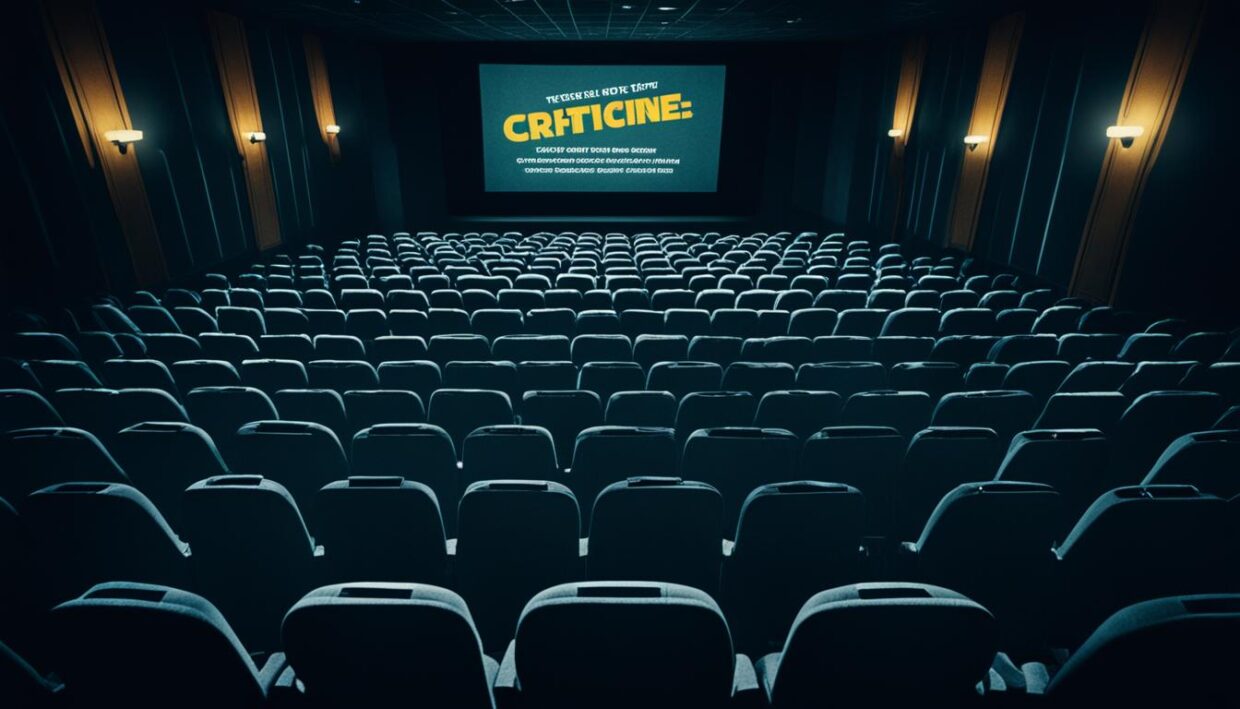
Overall, the complex interplay between critic opinions and audience reactions highlights the multifaceted nature of film appreciation and evaluation. While critics strive to provide a thoughtful and informed perspective, the public’s reception can sometimes take an unexpected turn, underscoring the importance of considering both viewpoints when assessing the true impact and legacy of a cinematic work.
Exploring Movie Rating Controversies
The movie rating system, designed to guide parents and audiences, has long been a subject of debate and controversy. From concerns over content guidelines to perceived inconsistencies in the application of ratings, the ongoing discussions surrounding this system highlight the complexities of navigating the ever-evolving landscape of cinema.
One of the key points of contention is the perceived leniency of the Motion Picture Association of America (MPAA) Ratings Board towards major studios compared to independent and foreign films. This has led to accusations of bias and a lack of transparency in the rating process.
Interestingly, recent research has shed light on the nature of movie rating controversies. A study focusing on data from the Internet Movie Database (IMDb) found that while controversy in movie ratings decreases with popularity, recent films tend to be more controversial than older ones. The study also introduced two statistical indexes, “hard controversiality” and “soft controversiality,” to quantify polarized and uniform rating distributions, respectively.
The study suggested that the phenomenon observed in movie ratings is qualitatively different from trends in online reviews of commercial products and political debates, highlighting the unique dynamics at play in the world of cinema. Furthermore, the IMDb database’s demographic data offers potential for further analysis, exploring the role of age, gender, and geographic origin in shaping audience perceptions.
As the debate over movie ratings continues, it is clear that the industry must strive to balance artistic expression, consumer protection, and evolving societal values. The ongoing efforts to ensure the rating system remains relevant and responsive to the changing cultural landscape will undoubtedly shape the future of film criticism and audience engagement.

“The MPAA Ratings Board has been criticized for perceived leniency towards major studios over independent and foreign films.”
The Future of Film Criticism
As the world of cinema continues to evolve, the field of film criticism is also poised for transformation. Emerging trends and technological advancements are shaping the way critics approach their craft, potentially redefining the critical landscape.
AI-Powered Film Analysis
The rise of artificial intelligence (AI) has opened up new possibilities for film analysis. AI-driven algorithms can now provide in-depth, data-driven insights into cinematic elements such as visual storytelling, character development, and emotional impact. This technology could enable critics to uncover nuances and patterns that may have previously eluded the human eye, leading to more comprehensive and insightful reviews.
The Influence of Social Media
Social media platforms have become a dominant force in the world of film criticism. Platforms like Letterboxd, which has grown to 2.5 million users with 1 million active users, have empowered audiences to share their opinions and engage in discussions about movies. This audience-driven approach to criticism is challenging the traditional model, as critics must now navigate the dynamic and often polarizing landscape of online discourse.
The Next Generation of Critics
The future of film criticism may also be shaped by the emerging generation of critics, who have grown up in a digital age. These critics are likely to bring a fresh perspective, embracing new technologies and social media platforms to connect with audiences in innovative ways. As the industry continues to evolve, the role of the critic may expand beyond traditional reviews, incorporating multimedia elements and interactive experiences to enhance the cinematic experience.
“The average difference in ratings between movie critics and audiences in 2022 reached a high point of 19 points compared to a previous average of about 5 points in preceding years.”
While the future of film criticism remains uncertain, one thing is clear: the field is poised for significant transformation. As technology, social media, and audience preferences continue to shape the landscape, the art of film criticism will need to adapt and evolve to maintain its relevance and impact.

Building Your Movie Watchlist
With the wealth of cinematic offerings available, the task of curating a personal movie watchlist can be both exciting and overwhelming. This section will provide guidance on how to build a tailored movie watchlist, drawing from the insights and information covered throughout the article. It will offer strategies for identifying films that align with individual preferences, leveraging review aggregators and critic recommendations, and creating a diverse and enriching cinematic experience.
One valuable resource for building your movie watchlist is the Letterboxd app, which boasts an impressive 1,999,975,692 films watched by its users. Letterboxd allows users to rate each film on a five-star scale, write and share reviews, and keep track of every film they’ve watched, providing a comprehensive platform for curating content.
To get started, explore the popular reviews and lists featured on Letterboxd, which can serve as a springboard for discovering new films that cater to your personal preferences. The platform’s user-friendly rating system, ranging from “masterpiece” to “extremely bad,” can also help you navigate the vast array of options and identify titles that pique your interest.
Additionally, Letterboxd users can create and share their own lists of films on any topic, from favorite franchises to best acting performances. Browsing these user-generated lists can expose you to hidden gems and introduce you to films you may not have discovered otherwise.
“Letterboxd is a fun way for film enthusiasts to connect, share their love of cinema, and discover new movies to add to their watchlist.”
By leveraging the wealth of information and community engagement available on Letterboxd, you can curate a movie watchlist that reflects your unique tastes and preferences, ensuring a diverse and enriching cinematic experience.

Conclusion
In conclusion, this comprehensive guide has delved into the multifaceted world of movie reviews and ratings, exploring the critical role they play in shaping the cinematic landscape. From understanding the intricacies of the rating system to navigating the evolving landscape of film criticism and entertainment journalism, readers have gained valuable insights that can inform their movie-viewing choices and enhance their appreciation of the art of cinema.
As the industry continues to evolve, the future of film criticism holds exciting possibilities, with the emergence of innovative platforms and formats that are reshaping the way audiences engage with and discuss movies. This article has provided a solid foundation for audiences to explore the world of movies with greater depth and discernment, empowering them to make informed decisions and develop a deeper understanding of the creative and technical aspects that contribute to the filmmaking process.
Whether through traditional print media, online platforms, or social media-driven discussions, movie reviews and ratings continue to be instrumental in guiding audiences and influencing the industry’s trajectory. By staying informed and actively engaging with the diverse perspectives and critiques available, movie enthusiasts can unlock a new level of appreciation for the art of cinema, ultimately enriching their overall viewing experience.













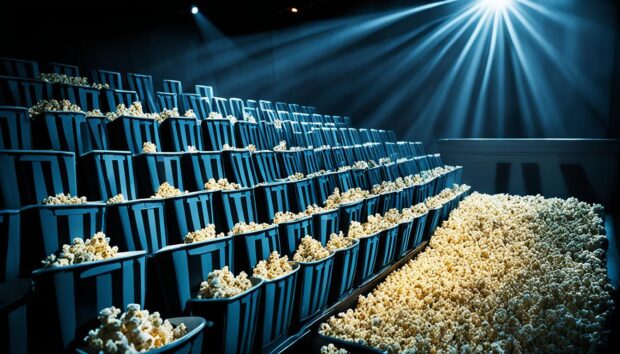







Be the first to leave a comment